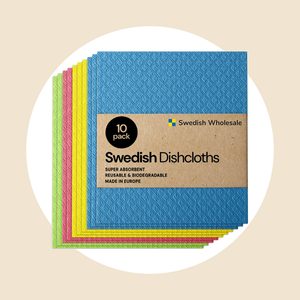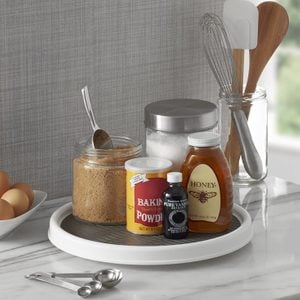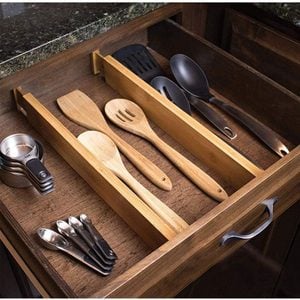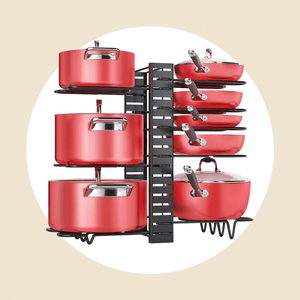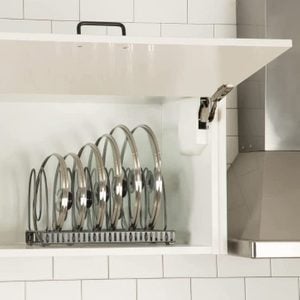Pro-level kitchen cabinet organization is easier than you think. Here's how to organize kitchen cabinets and clear up clutter for good.
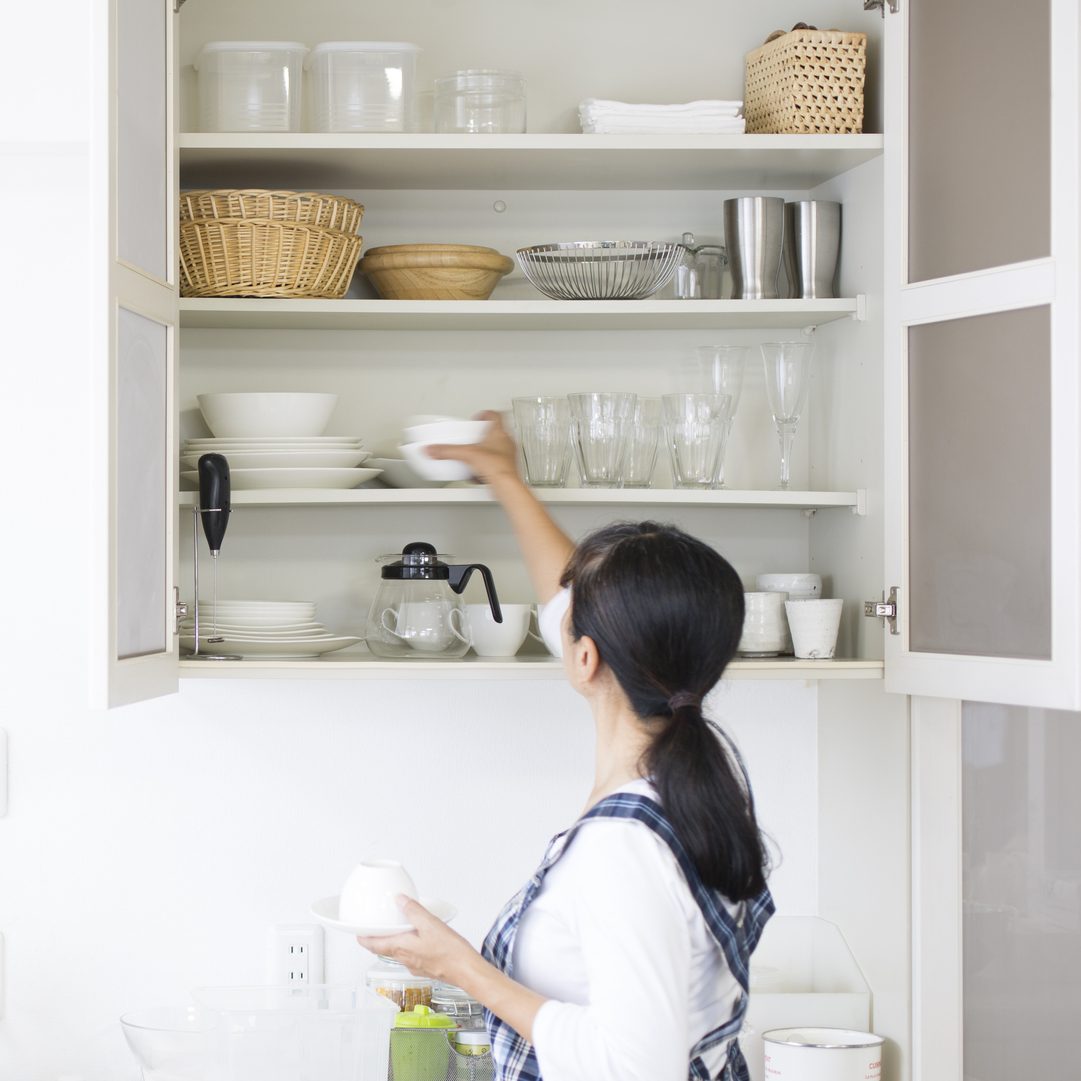
How to Organize Kitchen Cabinets, According to the Pros

Learning how to organize kitchen cabinets is an essential kitchen skill, and these organization tips from the pros ensure you’re getting the most out of your space. When you start practicing smart ways to clean and organize your cupboards, you’ll be amazed at how much space is created in the process. From pots and pans organization to kitchen storage ideas for all home sizes, you’ll wish you knew these priceless organizing tricks sooner!
How to Organize Kitchen Cabinets
“One of the easiest ways to organize kitchen cabinets is to edit them often,” suggests Britnee Tanner, a Salt Lake City-based home organizer who suggests pulling everything out and starting fresh. “Nothing helps eliminate clutter quite like going through every nook and cranny to expose the food, appliances and random kitchen gadgets that you never use or forgot you had.”
Tanner also tells her clients to create organizational zones that make finding tools and ingredients quick and easy. It’s one of her favorite pantry organization ideas, too. “It’s ideal to create zones for each kitchen cabinet so you can easily find what you’re looking for when you need it. This means having a cabinet or specific shelf in a cabinet dedicated to one type of category such as snacks, baking supplies and dinnerware.”
Julie Harris, a Kansas City-based organization expert and owner of Holloway Home Organization, emphasizes keeping cabinet zones practical. “Use cabinets under the kitchen sink for cleaning products, dishwasher detergent, extra dish towels and sponges. Large, heavy appliances like standing mixers, slow cookers and air fryers belong in a lower cabinet. If it’s only used occasionally, put it in the back of the cabinet.”
Cabinet Organization Tools
These genius kitchen organizers make cabinet organization easier than ever.
- Swedish dishcloths: You’ll want a high-quality, reusable cloth to wipe down your cabinets before putting items back in. These best-selling Swedish dishcloths can be used, washed and reused hundreds of times.
- Lazy Susan: Invest in a few affordable turntables to keep spices, condiments and other musts-haves within reach. This non-skid turntable is easy to clean and keeps food and cleaning supplies within sight. And at $10 a pop, grabbing a few of these turntables won’t break the bank.
- Under the sink organizer: Keeping cleaning supplies tidy beneath your sink is a must. This expandable organizer fits most lower cabinets, and it even stretches around pesky pipes.
- Adjustable drawer dividers: Keep cutlery and cooking utensils clutter-free with these adjustable bamboo dividers. Kitchen drawer organizers are some of the most important clutter-killers out there, and they’re especially important for busy households.
- Pots and pans organizer: Finding a home for your best cookware is a feat of its own, especially if you’re short on cabinet space or have awkwardly-shaped cabinets. This popular pots and pan organizing rack keeps cookware clutter-free while this slide-out lid organizer keeps all your lids (and cutting boards) visible and in their place.
Directions
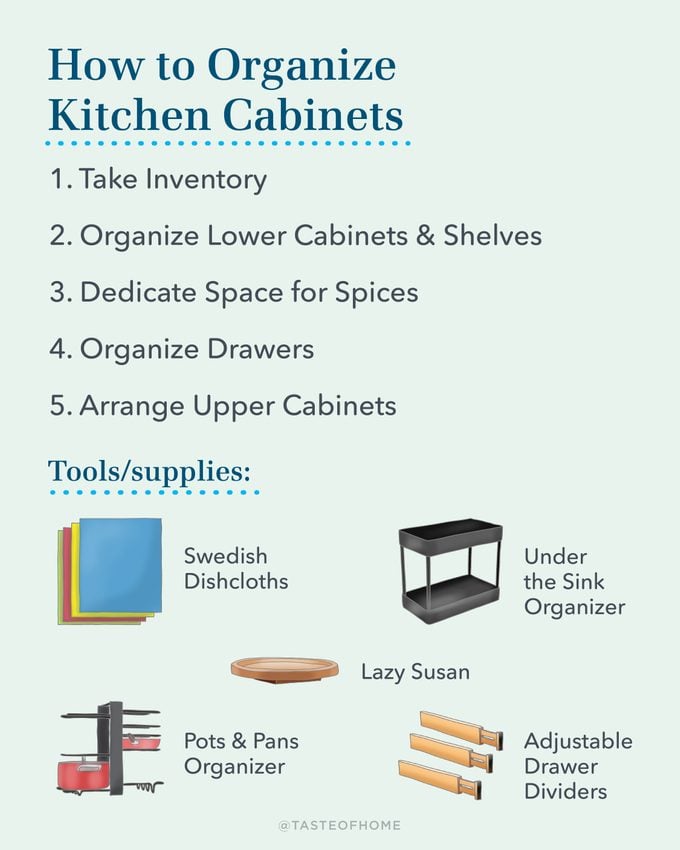
Take Inventory
- Pull everything out of your cabinets and take inventory of what’s in-stock, expired or broken. Throw out expired and broken goods and consider donating excess items.
- Wipe down cabinet doors, shelves and back walls.
- Optional: Consider adjusting your shelf heights to accommodate large kitchen appliances.
Organize Lower Cabinets and Shelves
- Arrange cleaning supplies in the cabinet below your sink with an under the sink organizer or turntable. Place cleaning supplies like sponges, dishcloths and extra dish soaps on the turntable or organizer of your choice.
- Dedicate a second lower cabinet for most-used countertop appliances. “Air fryers belong in a lower cabinet,” says Harris. She advises that seldom-used appliances should be stored towards the back while frequently-used appliances deserve front row access.
- Reserve a third lower cabinet for infrequently-used cookware. “Store pots and pans in a cabinet next to the stove,” adds Harris. “Stack pots and pans to save space or lay them on their side using a pots and pans organizer. Store lids together.”
Dedicate Space for Spices
- Take stock of spices and seasonings and see what blends can be combined. Chances are you have a few garlic powders that could be consolidated in one spice container.
- Find a spice organizer solution and assemble spices accordingly. We recommend dedicating a drawer or cabinet (doesn’t need to big) for spices and adding a multi-tiered drawer or cabinet insert (here’s how to organize your spices once you’ve got that done). If you’re working with less space, a turntable is also a quick (and affordable) fix.
Organize Drawers
- Use adjustable drawer dividers to create space for everyday cutlery like forks, knives and spoons.
- Reserve a separate drawer for serve ware, cooking utensils and handheld kitchen gadgets. These shouldn’t co-mingle with everyday cutlery—it’s clutter waiting to happen.
- Clean out the junk drawer. (We know you have one.) Organize what’s in the junk drawer into categories and determine if there’s a better place for some of the items. One junk draw is OK, but it shouldn’t be so cluttered that you can’t find anything in it.
- Pro tip: If you’re short on drawer space, cooking utensils and serve ware can live on the countertop in a ceramic or metal container. Bonus points if it’s decorative, like one of these cute utensil holders.
Arrange Upper Cabinets
The upper cabinets are your final frontier. These are the cabinets that are used the most, so it’s important to put extra love and care into them.
- “Place all coffee items (mugs, filters, coffee containers and pods) in a cabinet near the coffee maker,” adds Harris. “Keeping these items in one location facilitates a smooth morning routine.” If you have extra space in that cabinet, you can add teas, sweeteners and flavored syrups.
- Dedicate a cabinet to plates and bowls and a separate cabinet for drinkware. “I recommend nesting plates and bowls to save space wherever possible,” says Tanner. “I also recommend utilizing upper cabinet shelves or deep pull-out drawers for items like plates, cups and bowls. If you have tall cabinets with more vertical space, consider adding a compact kitchen organizer that adds shelf space as it maximizes the vertical area and creates the perfect spot for storing plates below and things like bowls or cups on top of it.”
How Do You Decide Where to Put Things in Kitchen Cabinets?
Tanner and Harris agree that creating workstations or zones is the best way to organize kitchen cabinets. Coffee products should be in an upper cabinet near the coffee maker; sponges and cleaning supplies belong under the kitchen sink; and your most-used pots and pans deserve a spot near the stove, preferably in a lower cabinet.
How Do You Organize Corner Cabinets?
Corner cabinets are a prime opportunity to use turntables. They’re ideal for storing smaller items like spices, oils and vinegars. Look into kitchen organization tools that are designed for tricky spaces to make the most of awkward spaces.
How Do You Organize Deep Kitchen Cabinets?
Harris suggests placing infrequently-used and large, heavy items toward the back of deep cabinets. For example, if you only use your panini press a few times a year, it should be stored in the back. This system works for even the most unique kitchen cabinets.
Conclusion
Learning how to organize kitchen cabinets is daunting, but it’s a life-changing task that’s guaranteed to clear clutter and lighten the load. Just remember to edit out expired or unused pantry and kitchen items every few months. You’ll be a kitchen cabinet organizing pro in no time!
